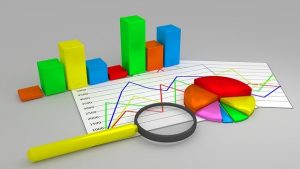How the average person understands statistical data


According to research results, many people have surprisingly little knowledge of statistics. One of such studies (Smedslund, 1963 as cited in: Tyszka, 1999) examined whether nurses were able to assess whether there was a relationship between any symptoms and the disease. They were given to review 100 patient cards for the experiment, each containing information about whether or not a symptom had occurred and whether or not a certain disease had occurred or not.
The information contained in the cards can be summarized in the table:
| Disease exists | Disease doesn’t exist | |
| Symptom exists | 37 | 33 |
| Symptom doesn’t exist | 17 | 13 |
What do you think? Is there a relationship between the symptom and the disease or are they independent of each other? If you looked at the largest number in this table, 37 and found the link to exist, you are wrong, as are 85% of the nurses surveyed. Note that out of 70 cases of the symptom (37 + 33), the disease is present in only 37, which is just over 50% of the cases. It is also present in 17 cases out of 30 (17 + 13) in which the symptom described in the cards did not occur. The disease is therefore completely independent of the symptom. Sometimes there is a symptom but no disease is present, and sometimes there is a disease without the symptom. In other words, symptom and disease do not correlate with each other.
Many problems that we encounter in everyday life can be described in the form of such tables. As an example, do dreams foretell the future?
| Event X occured | Event X didn’t occured | |
| Event X was in a dream | A | B |
| Event X wasn’t in a dream | C | D |
As noted by Gilovich (1991), when analyzing such problems, people tend to pay too much attention to cell A and ignore information from other cells. Anyone may dream of an event and it will happen the next day. But that doesn’t mean that dreams foretell the future. In order to determine whether or not they are predicting, one still has to consider how often an event that has not been dreamed of before occurs and how often there is an event in the dreams that does not occur later in reality.
Another example is Adult Children of Alcoholics, which I wrote about earlier. Nobody is saying that a person who grew up with alcoholism cannot have mental problems in adulthood because of it. Certainly there are people who have an alcoholic parent and some problems (cell A), but there are also those who are a child of the alcoholic and do not have such problems (cell B), and others who are not a child of the alcoholic and yet have such problems (cell C). In all such relationships, in order to assess whether there is indeed a relationship between two events, factors, or problems, one should consider information from each cell of the table, not just from cell A.
Psychologists describe the so-called Benevolent Dolphin Problem (Tavris, Aronson, 2008). There are stories of dolphins rescuing wounded shipwrecks by not letting them drown and being towed ashore, and many people claim that dolphins are good helpful animals. However, such a request is not authorized. We do not know how many survivors were drowned by the dolphins or how many were completely ignored by them. Perhaps there were no such situations, perhaps they happen much less frequently than the help given to a man, and perhaps the help that a dolphin gave a man is a very rare event, and in the majority of cases, dolphins do not help a person at all or even harm a person. Only if we knew all such cases and counted how often dolphins help, how often they harm, and how often they do nothing, could we determine whether they are good or bad.
References
- Gilovich, T. (1991). Too much from too little: The misinterpretation of incomplete and unrepresentative data. How we know what isn’t so: The fallibility of human reason in everyday life (29-48). New York: The Free Press.
- Tavris, C., Aronson, E. (2008). Błądzą wszyscy (ale nie ja). Sopot, Warszawa: Smak Słowa i Wydawnictwo SWPS Academica.
- Tyszka, T. (1999). Psychologiczne pułapki oceniania i podejmowania decyzji. Gdańsk: Gdańskie Wydawnictwo Psychologiczne.
Author: Maja Kochanowska






Add comment